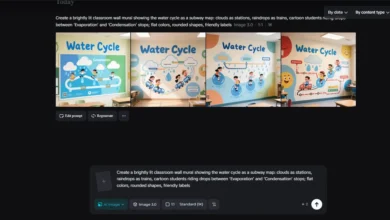
In the current digital era, a responsive website is crucial for any business aiming to provide an optimal user experience across all devices. With the proliferation of smartphones and tablets, having a website that adjusts seamlessly to various screen sizes is no longer optional but a necessity. This article delves into the importance of working with a responsive web design company and how it can benefit your business.
Why You Need a Responsive Website
A responsive website automatically adjusts its layout and content to fit any screen size, ensuring that users have a consistent and pleasant experience regardless of the device they use. This adaptability leads to higher user engagement, longer visit durations, and increased conversions.
Benefits of Hiring a Responsive Website Development Company
Expertise and Experience
A reputable responsive website development company brings a wealth of experience and expertise to the table. They have a deep understanding of design principles, user behavior, and the latest technologies, ensuring that your website is not only visually appealing but also functional and user-friendly.
Cost-Effectiveness
Developing a responsive website is often more cost-effective than creating separate versions for different devices. A single responsive design can serve all platforms, reducing development and maintenance costs.
SEO Benefits
Search engines prefer responsive websites because they offer a better user experience. A responsive web design company can help optimize your site for search engines, improving your rankings and driving more organic traffic.
Future-Proofing
Technology is constantly evolving, and new devices with varying screen sizes are regularly introduced. A responsive design ensures that your website remains functional and attractive on any new device, safeguarding your investment.
Key Features of a Good Responsive Website
1. Fluid Grid Layouts
A fluid grid layout allows your website’s elements to resize proportionally based on the screen size. This adaptability is crucial for maintaining a consistent look and feel across devices.
2. Flexible Images and Media
Images and media should be able to scale within the layout without losing quality. This ensures that visual content remains sharp and engaging on all devices.
3. Media Queries
Media queries enable the application of different CSS rules based on the characteristics of the device, such as its width, height, and orientation. This flexibility allows for precise control over the design for various screen sizes.
4. Responsive Typography
Text should be readable on all devices, requiring a balance between size, line height, and spacing. A responsive website development company will ensure that your typography adjusts smoothly across different screens.
Choosing the Right Responsive Web Design Company
- Portfolio and Case Studies: Examine the company’s portfolio and case studies to gauge their expertise and experience. Look for projects similar to yours and assess the quality of their work.
- Client Testimonials and Reviews: Client testimonials and reviews provide valuable insights into the company’s reliability, professionalism, and ability to deliver results. A reputable responsive web design company will have positive feedback from satisfied clients.
- Technical Proficiency: Ensure that the company is proficient in the latest web development technologies and practices. They should have expertise in HTML5, CSS3, JavaScript, and other relevant tools.
- Communication and Collaboration: Effective communication and collaboration are essential for a successful project. Choose a company that is responsive to your queries, open to feedback, and committed to working closely with you throughout the development process.
- Support and Maintenance: Ongoing support and maintenance are crucial for keeping your website up-to-date and running smoothly. A reliable responsive website development company will offer post-launch support to address any issues and implement necessary updates.
The Development Process
1. Discovery and Planning
The development process begins with a thorough discovery phase, where the company gathers information about your business, target audience, and goals. This information is used to create a detailed project plan.
2. Design and Prototyping
The design phase involves creating wireframes and prototypes to visualize the layout and functionality of your website. This stage allows for feedback and adjustments before moving on to development.
3. Development
During the development phase, the responsive web design company brings the design to life using coding and programming. They ensure that the site is fully responsive, functional, and optimized for performance.
4. Testing and Quality Assurance
Comprehensive testing is conducted to identify and fix any issues. This includes checking the site’s responsiveness, performance, security, and compatibility with various browsers and devices.
5. Launch and Deployment
Once the site has been thoroughly tested and approved, it is launched and deployed. The company will monitor the site to ensure everything runs smoothly and address any post-launch issues.
Conclusion
Partnering with a responsive web design company is a strategic investment that can significantly enhance your online presence and user experience. By choosing a company with the right expertise and approach, you can ensure that your website is not only visually appealing but also functional, user-friendly, and future-proof. Take the time to research and select a responsive website development company that aligns with your business goals and can deliver a website that meets your needs.

















